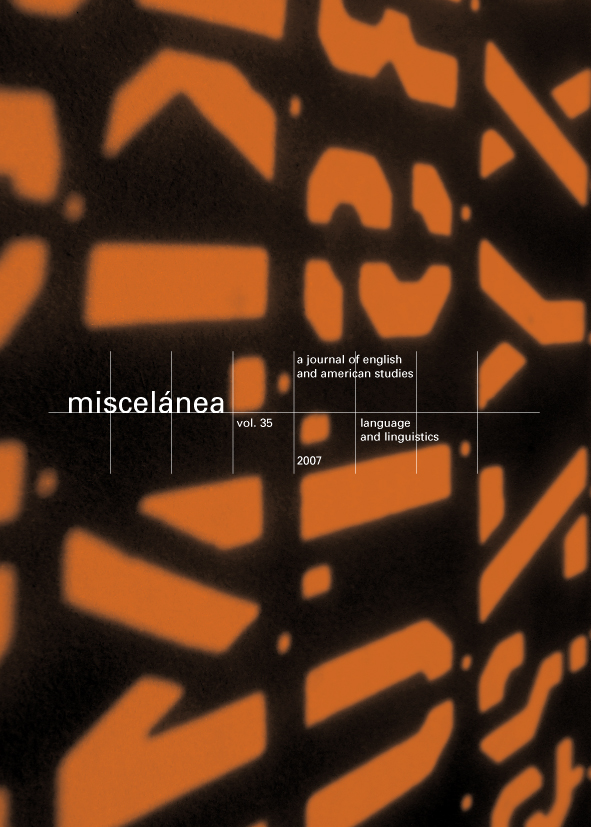Ser escocés es mucho más que ponerse un kilt y trincar tus /r/s. Estudio de la credibilidad en la película de Hollywood Braveheart
DOI:
https://doi.org/10.26754/ojs_misc/mj.20079700Palabras clave:
Inglés Escocés Estándar, Regla de Longitud Vocálica Escocesa, credibilidad lingüística, estudios fílmicos, enseñanza de dialectosResumen
El presente artículo investiga la credibilidad lingüística de la película Braveheart (1995). Trata en primer lugar sobre la decisión de los productores de rechazar la realidad del uso lingüístico históricamente correcto para primar las realidades sociolingüísticas actuales. Posteriormente se lleva a cabo un análisis fonético del intento del protagonista (Mel Gibson) de reproducir el acento del Inglés Escocés estándar. El análisis se lleva a cabo principalmente a nivel fonémico, en el que se analizan algunas consonantes y vocales del estereotipo escocés. No obstante, el análisis se centra en la calidad de la imitación por parte del actor de la Regla de Longitud Vocálica Escocesa (o ley de Aitken). El resultado del análisis es que Gibson ha hecho un esfuerzo considerable en la imitación del acento del Inglés Escocés estándar, y aunque quizás no sería tomado por tal por un hablante nativo de tal acento, sus esfuerzos serían tal vez suficientes para los espectadores americanos e internacionales, la audiencia principal de la película. Podría decirse que Mel Gibson intenta conseguir un acento más matizado, antes que una imitación del Inglés Escocés estándar. Mel Gibson debió llegar a la conclusión de que ser escocés es algo más que llevar una falda escocesa y hacer vibrar las erres.
Descargas
Referencias
Aitken, A.J. 1981. “The Scottish Vowel-length Rule”. In Benskin, M. and M.L. Samuels (eds.) So Meny People Longages and Tonges: Philological Essays in Scots and Mediaeval English Presented to Angus McIntosh: 131-157.
Giegerich, Heinz J. 1992. English Phonology: An Introduction. Cambridge: Cambridge U.P.
Lass, Roger. 1976. English Phonology and Phonological Theory: Synchronic and Diachronic Studies. Cambridge: Cambridge U.P.
—. 1984. Phonology: An Introduction to Basic Concepts. Cambridge: Cambridge U.P.
McMahon, April M. 2000. Lexical Phonology. Port Chester, NY, USA: Cambridge U.P.
Scobbie, James. 2002. Fuzzy Contrasts, Fuzzy Inventories, Fuzzy Systems: Thoughts on Quasiphonemic Contrast, the Phonetics/phonology Interface and Sociolinguistic Variation. Paper presented at the Second International Conference on Contrast in Phonology, University of Toronto, Canada, 3-5 May 2002.
Scobbie, James, Nigel HEWLETT and Alice TURK. 1999. “Standard English in Edinburgh and Glasgow: the Scottish Vowel Length Rule revealed”. In Foulkes, Paul and Gerard Docherty (eds.) Urban Voices. London/New York: Arnold.
Sundkvist, Peter. 2004. The Vowel System of a Shetland Accent of Scottish Standard English: A Segmental Analysis. Stockholm: Stockholm University.
Trudgill, Peter & Jean Hannah. 1982. International English. London/ New York: Arnold.
Wells, John C. 1982. Accents of English 1: An Introduction. Cambridge: Cambridge U.P.
—. 1986. Accents of English 2: The British Isles. Cambridge: Cambridge U.P.
Films
Braveheart, 1995. Directed by Mel Gibson.
Ransom, 1996. Directed by Ron Howard.
Trainspotting, 1996. Directed by Danny Boyle
Web sites
The Internet Movie DataBase (IMDB) “Braveheart” http://www.imdb.com/title/tt0112573/ Viewed June 15, 2004
The Internet Movie DataBase (IMDB) “Mel Gibson” http://www.imdb.com/name/nm0000154/ Viewed June 16, 2004
Descargas
Publicado
Número
Sección
Licencia
Derechos de autor 2007 Jan Pedersen

Esta obra está bajo una licencia internacional Creative Commons Atribución-NoComercial 4.0.


